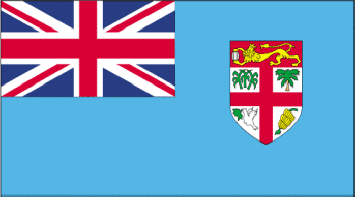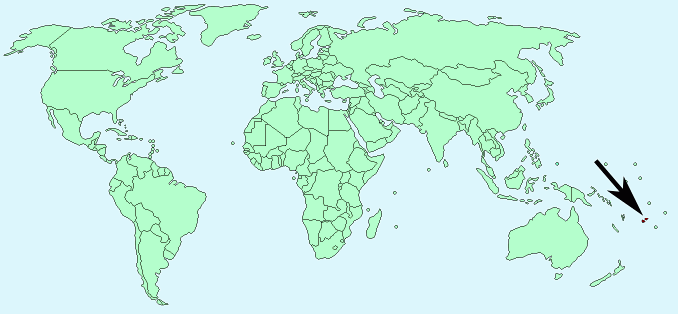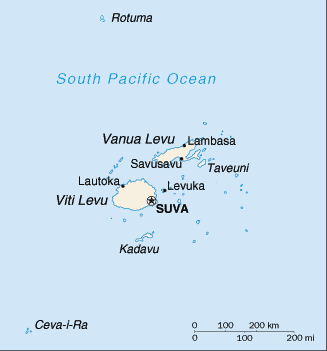Fiji


Continent – Australasia
Region – Polynesia
Size – 18,270 km²
Geography – mountainous, mostly volcanic
Language – English, Fijian
Religion – 53% Christian, 34% Hindu, 7% Muslim, 6% Other
Monetary Unit – Fijian Dollar
Natural Resources – timber, fish, gold, copper, offshore oil potential
Agriculture – sugarcane, coconuts, cassava (tapioca), rice, sweet potatoes, bananas; cattle, pigs, horses, goats; fish
Industry – tourism, sugar, clothing, copra, gold, silver, lumber, small cottage industries

Neighbouring Countries – None – island group
Population – 903,207 (2014 estimate)
Population Growth Rate – 1.38%
Average Life Expectancy – 72.15
Capital City – Suva (88,271)
Highest Mountain – Tomanivi (1,324 m)
Longest River – Rewa (145 km)
Climate – tropical, warm 20°C to 29°C
Yearly Rainfall – 300 cm (approx)
Plant Life – Mangrove, Coconut, grasses
Animal Life – bats, rats, snakes, frogs, lizards
Harvard Reference for this page:
Heather Y Wheeler. (2015). Fiji. Available: https://www.naturalhistoryonthenet.com/Facts_Figures/Country_Facts/fiji.htm. Last accessed Monday, July 18, 2016
Facts and Figures Pages
